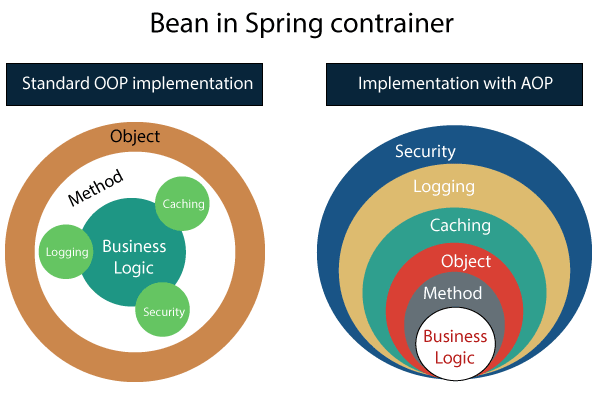-
Spring Boot Tutorial
Creating Project
Project Components
- sb-annotations
- sb-dependency-management
- sb-application-properties
- sb-starters
- sb-starter-parent
- sb-starter-web
- sb-starter-data-jpa
- sb-starter-actuator
- sb-starter-test
- sb-devtools
- multi-module-project
- sb-packaging
- sb-auto-configuration
Tool Suite
Spring Boot AOP
- spring-boot-aop
- aop-before-advice
- aop-after-advice
- aop-around-advice
- after-returning-advice
- after-throwing-advice
Spring Boot Database
Spring Boot View
SB Caching
Spring Boot Misc
Spring Boot - RESTful
- introduction-to-restful-web-services-with-spring-boot
- initializing-a-restful-web-services
- spring-boot-auto-configuration-and-dispatcher-servlet
- enhancing-the-hello-world-service-with-a-path-variable
- implementing-the-post-method-to-create-user-resource
- implementing-exception-handling--404-resource-not-found
- implementing-generic-exception-handling-for-all-resources
- implementing-delete-method-to-delete-a-user-resource
- implementing-validations-for-restful-services
- implementing-hateoas-for-restful-services
- internationalization-of-restful-services
- content-negotiation-implementing-support-for-xml
- configuring-auto-generation-of-swagger-documentation
- introduction-to-swagger-documentation-format
- enhancing-swagger-documentation-with-custom-annotations
- monitoring-apis-with-spring-boot-actuator
- implementing-static-filtering-for-restful-services
- implementing-dynamic-filtering-for-restful-services
- versioning-restful-web-services-basic-approach-with-uris
- implementing-basic-authentication-with-spring-security
- connecting-restful-services-to-jpa
- updating-get-methods-on-user-resource-to-use-jpa
- updating-post-and-delete-methods-on-userresource-to-use-jpa
- creating-post-entity-and-many-to-one-relationship-with-user-entity
- implementing-a-get-service-to-retrieve-all-posts-of-a-user
- implementing-post-service-to-create-a-post-for-a-user
- richardson-maturity-model
- restful-web-services-best-practice
Spring Tutorial
Spring Cloud
Spring Microservices
Interview Questions
Spring Boot AOPThe application is generally developed with multiple layers. A typical Java application has the following layers:
The responsibility of each layer is different, but there are a few common aspects that apply to all layers are Logging, Security, validation, caching, etc. These common aspects are called cross-cutting concerns. If we implement these concerns in each layer separately, the code becomes more difficult to maintain. To overcome this problem, Aspect-Oriented Programming (AOP) provides a solution to implement cross-cutting concerns.
It ensures that the cross-cutting concerns are defined in one cohesive code component. AOPAOP (Aspect-Oriented Programming) is a programming pattern that increases modularity by allowing the separation of the cross-cutting concern. These cross-cutting concerns are different from the main business logic. We can add additional behavior to existing code without modification of the code itself. Spring's AOP framework helps us to implement these cross-cutting concerns. Using AOP, we define common functionality in one place. We are free to define how and where this functionality is applied without modifying the class to which we are applying the new feature. The cross-cutting concern can now be modularized into special classes, called aspect. There are two benefits of aspects:
The aspects have the responsibility that is to be implemented, called advice. We can implement an aspect's functionality into a program at one or more join points. Benefits of AOP
Cross-cutting concernThe cross-cutting concern is a concern that we want to implement in multiple places in an application. It affects the entire application. AOP Terminology
Proxy: It is an object that is created after applying advice to a target object is called proxy. The Spring AOP implements the JDK dynamic proxy to create the proxy classes with target classes and advice invocations. These are called AOP proxy classes. AOP vs. OOPThe differences between AOP and OOP are as follows:
Spring AOP vs. AspectJThe differences between AOP and OOP are as follows:
Types of AOP AdvicesThere are five types of AOP advices are as follows:
Before Advice: An advice that executes before a join point, is called before advice. We use @Before annotation to mark an advice as Before advice. After Advice: An advice that executes after a join point, is called after advice. We use @After annotation to mark an advice as After advice. Around Advice: An advice that executes before and after of a join point, is called around advice. After Throwing Advice: An advice that executes when a join point throws an exception. After Returning Advice: An advice that executes when a method executes successfully. Before implementing the AOP in an application, we are required to add Spring AOP dependency in the pom.xml file. Spring Boot Starter AOPSpring Boot Starter AOP is a dependency that provides Spring AOP and AspectJ. Where AOP provides basic AOP capabilities while the AspectJ provides a complete AOP framework. In the next section, we will implement the different advices in the application. Next TopicSpring Boot AOP Before Advice
|
